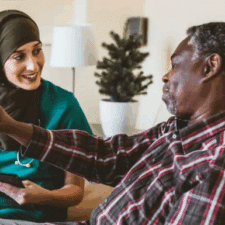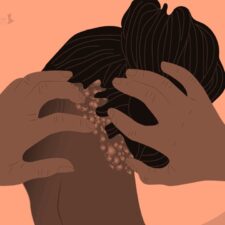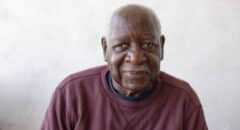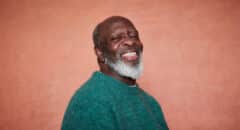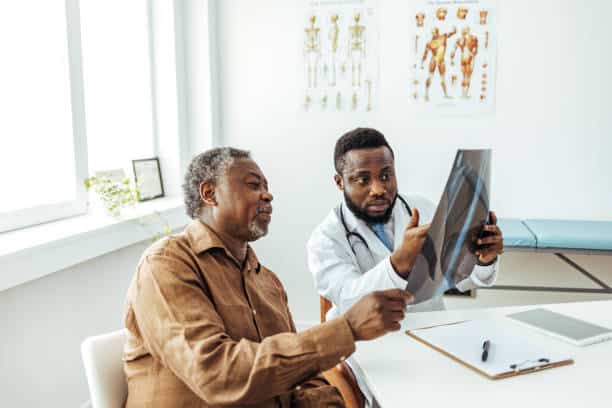
When a lung nodule is found—whether through routine screening or an incidental scan—it can spark fear, confusion, and uncertainty. But according to Dr. Thomas Gildea, Global Medical Director for Respiratory at Olympus and part-time practicing pulmonologist, what happens after that initial discovery is just as important as the scan itself.
In this article, we walk through why follow-up care and clear communication are essential for both patients and providers.
“The moment a nodule is discovered, it can be jarring,” Dr. Gildea says. “Lung nodules are often found incidentally, such as getting scans for an unrelated issue like shoulder surgery or shortness of breath. The reality is that a lot of the time nodules are detected without looking for them, and that can be quite scary. That’s why what happens next is important.”
Most Nodules Aren’t Cancer — But That Doesn’t Mean Doing Nothing
One of the first things patients need to hear is that a lung nodule doesn’t automatically mean cancer. In fact, most nodules are benign.
“The good news is most lung nodules are non-cancerous; however, it’s our job as physicians to ensure proper follow-up to give patients context and a clear understanding of the finding and the process going forward,” Dr. Gildea explains.
Still, many patients are left without clear guidance on what to do next. Some don’t receive enough information, while others don’t understand if—or when—they should be concerned.
Closing the Gap Between Detection and Diagnosis
Dr. Gildea points to a persistent issue: a communication gap. Many patients are told they have a lung nodule but aren’t given the next steps, leaving them anxious and confused.
“When patients are told they have a lung nodule, there’s so much uncertainty about what it is and what it means for their health,” Dr. Gildea adds. “And while we as doctors don’t have all the answers right away until further testing, we work with the patient to make a plan.”
“Describing that process involves an understanding of the patient’s clinical risks, their concerns, and the issues that bring them fear or anxiety. That’s where this new initiative comes in,” Dr. Gildea shares.
New Educational Campaign Launches for World Lung Cancer Day
In honor of World Lung Cancer Day on August 1, Olympus Corp. of the Americas announced its sponsorship of the American Lung Association’s newest educational initiative. The campaign focuses on helping patients navigate the uncertain period after a lung nodule is found.
“Discovering a nodule can be an anxious and confusing process,” Dr. Gildea says. “There are several factors to consider, including the fact that most lung nodules are benign and understanding the risk assessment and process when they may be malignant.”
The campaign was developed using interviews and feedback from patients and caregivers. It includes:
- A guide to interpreting lung nodule reports
- A worksheet for planning follow-up care
- Resources explaining diagnostic options and guidelines
The goal is to provide patients with clear, actionable information and reduce confusion during a critical time.
“An educational campaign like this is important because it’s crucial to help patients and families make sense of their results, ask the right questions, and feel more confident going forward. Clear communication and shared decision-making are essential to getting the best care,” Dr. Gildea notes.
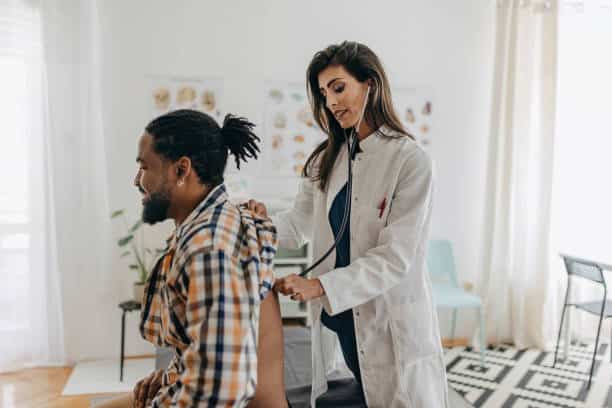
What Happens After a Lung Nodule Is Found?
Not all lung nodules are the same. Those found during screening often require a different level of follow-up than those found incidentally.
“When a lung nodule is found through screening, it’s different from an incidental finding,” Dr. Gildea says. “With screening for lung cancer, the goal is to identify people who are at particularly high risk, so finding a nodule here has much more significance.”
Doctors use tools like the Lung-RADS classification system to determine what happens next. Depending on the characteristics of the nodule, the plan could include:
- Advanced imaging such as a PET scan
- Biopsy via bronchoscopy or CT-guided needle
- Referral to a specialist
- Routine monitoring over time
“What’s important is that patients know there’s a plan and teams of professionals standing behind them through it all,” Dr. Gildea adds. “Monitoring is a required part of this process, and routine follow-up offers us the opportunity to open conversations about patient concerns and next steps.”
Why Education Eases Anxiety
Fear of the unknown can be one of the hardest parts of a lung nodule diagnosis. That’s why patient education is so critical.
“Education is empowering. When patients understand what’s happening with their specific nodule, it goes a long way in easing anxiety,” Dr. Gildea explains. “It opens the door for a more grounded, productive conversation about next steps.”
But before those conversations happen, providers must first recognize how unsettling the moment can be.
“It’s important to acknowledge that this can be a scary moment—and to be present with that. Once we’ve created that space, education gives patients a sense of control. From there, we can set shared goals, walk through the plan together, and move forward as a team,” he notes.
RELATED: Lung Cancer Screening: What Black Patients Need to Know
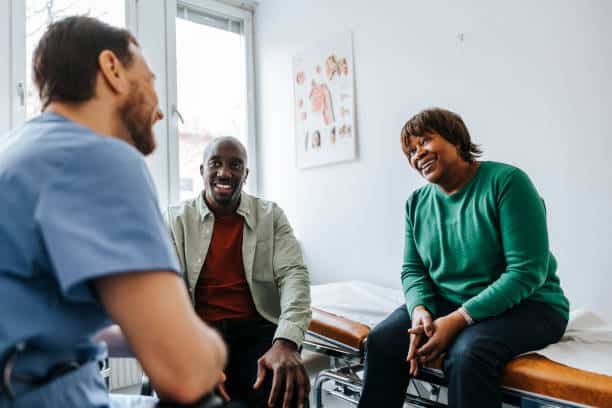
Why Many People Still Aren’t Screened for Lung Cancer
Despite the benefits of early detection, lung cancer screening remains underused, even among eligible patients.
“Screening is so important, yet globally, only a small percentage of patients eligible for screening actually receive it,” Dr. Gildea shares.
Smoking history is the most common reason for screening eligibility.
“The most common risk factor that prompts screening is smoking history, particularly those with a 20-pack-year history, or one pack per day for 20 years,” he says. “While common, a history of smoking isn’t the only risk factor. Exposures and medical and family history can be factors as well. Also, the screening age has been recently lowered to 50 years.”
Symptoms like a persistent cough or chest pain can be vague, but they should never be ignored.
“Because symptoms can be very vague – a persistent cough, chest pain, and weight loss, they should always be investigated and never ignored,” he adds.
In historically marginalized communities, screening is even harder to access.
“In many communities that have been historically marginalized or face systemic barriers to care, challenges like limited financial resources, uneven access to education, fewer nearby screening centers, and longstanding mistrust in the healthcare system can all impact lung cancer screening,” Dr. Gildea explains.
“Some individuals may not meet criteria or simply lack the means to get to a screening facility. That’s why targeted outreach is essential. Most importantly, we—as healthcare professionals—need to meet people where they are to build trust and improve access to potentially life-saving care,” he adds.
For Providers: Clear, Compassionate Follow-Up is Critical
Dr. Gildea emphasizes three essential principles for providers when discussing lung nodule results: clarity, empathy, and follow-through.
- “First, it’s important to be exceedingly clear about what was found. Patients need to hear clear language that explains results, such as there’s an abnormality in the chest that requires evaluation.”
- “Second, we need to be very empathetic as professionals. Recognize that a patient may be in a stressful moment, needing space to express their questions and be heard.”
- “Finally, allowing follow-up is critical. We have to move according to the plan, but we also need to be available for those follow-up questions or concerns and normalize the uncertainty that patients experience.”
“A recommendation for a CAT scan in several months may feel dismissive to the patient, so it’s on us as professionals to keep checking in with them and explain that following these testing guidelines are informing our understanding of the diagnosis—not to leave them guessing along the way.”
The Bottom Line
Lung nodules can be alarming, but they don’t have to leave patients in the dark. With the right tools, education, and compassionate care, providers can turn fear into clarity and confusion into collaboration.
“It’s not just about finding the nodule—it’s about what happens next,” Dr. Gildea concludes.

